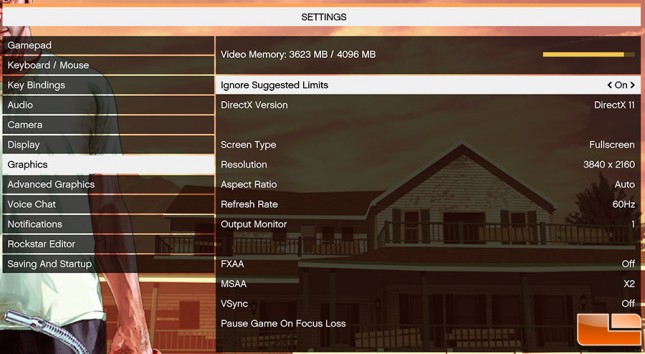

- #Nvidia control panel best settings rtx 2080 ti how to#
- #Nvidia control panel best settings rtx 2080 ti drivers#
- #Nvidia control panel best settings rtx 2080 ti driver#
This means the sharpening component of Image Scaling is in effect, but not the upscaling. Step 4: Step 3: Assuming you left the Overlay Indicator box checked, you should see a blue “NIS” indicator in the corner of your screen. Step 3: Click “OK”, then “Apply” to save your changes. To start with, I’d recommend leaving the slider in the 60-70% range, as this will generally make upscaled games look more crisp without appearing overly processed. You can also adjust the slider to choose the global sharpening filter intensity, though you may eventually wish to set different sharpening values for different games (see below). Step 2: Click on Image Scaling and set it to “On (GPU Scaling & Sharpening)” while leaving the Overlay Indicator box checked for now.
#Nvidia control panel best settings rtx 2080 ti drivers#
Under Global Settings, you should see the Image Scaling setting at the top of the list if it’s not there, update your graphics card drivers to the latest version. Step 1: Open up Nvidia Control Panel and click “Manage 3D settings”.
#Nvidia control panel best settings rtx 2080 ti how to#
How to use Nvidia Image Scaling with Nvidia Control Panel Whichever one you use, first make sure your Nvidia graphics card drivers are up to date, as is GeForce Experience if you’re going that route. Using GeForce Experience is easier, especially if you already rely on it to set your games’ other graphical settings, though it can also introduce compatibility issues: a game that can’t be “Optimised” through GeForce Experience won’t have Image Scaling applied unless you set it through Nvidia Control Panel instead. I’d definitely start with the Nvidia Control Panel method, which is slightly more involved than using Nvidia GeForce Experience, but also gives you more control. There are in fact two methods of enabling Image Scaling, both of which are detailed below. The upside of this approach is that Image Scaling can potentially work with any game, not just those with developer-crafted support for it. Unlike both DLSS and FSR, however, it’s also distinct in that you’ll need to set it up outside of your games, as opposed to just flicking a switch within them. The way Image Scaling works is actually much more akin to AMD’s FidelityFX Super Resolution (FSR) than the AI-fuelled DLSS, because it doesn’t add any clever anti-aliasing of its own, simply applying an upscaling algorithm with a sharpening effect to reduce visible blurriness. However, the issue of exactly how to use Nvidia Image Scaling isn’t very well-explained by Nvidia’s own software, so I suppose the task falls to this guide you’re already reading. Unlike DLSS, it also doesn’t require one of the best graphics cards from Nvidia’s RTX range, only an Nvidia GPU from the Maxwell generation or later – so the performance benefit is available to far more potential users.
#Nvidia control panel best settings rtx 2080 ti driver#
Otherwise use the Global option so that the sim settings are in command of other elements of your GPU driver setup.Nvidia Image Scaling might not be computer magic on par with DLSS, but it can perform a similarly useful job: boosting your frame rates by rendering games at a lower resolution, then upscaling them to match your monitor’s native res. Setting LOD Load Bias to Clamp improved some aspects of the pixelated odd looking cloud edges in in MSFS. The second thing would be to set Low Latency Mode to Ultra-this bought roughly 12-15% decrease in GPU utilization, however I am able to use vsync to 30Hz, and this may be required to get the benefit of this option.

If your 4K monitor can do 30Hz, then that is the first asset I would exploit along w/ setting VSYNC rate to 60 in MSFS. I haven’t set any of them manually, so not sure if nVidia set them to their view of optimal.Īny help or insights or best practices would be appreciated. My question is what settings should be turned on globally vs set to use the app settings. Some app specific settings for FS2020 show using the global setting, some show to let the app control, and some are turned off. What I’m confused about are what settings need to be set in the nVidia control panel. I’ve got the latest drivers and have graphics settings in the sim set to essentially the “high” settings.


 0 kommentar(er)
0 kommentar(er)
